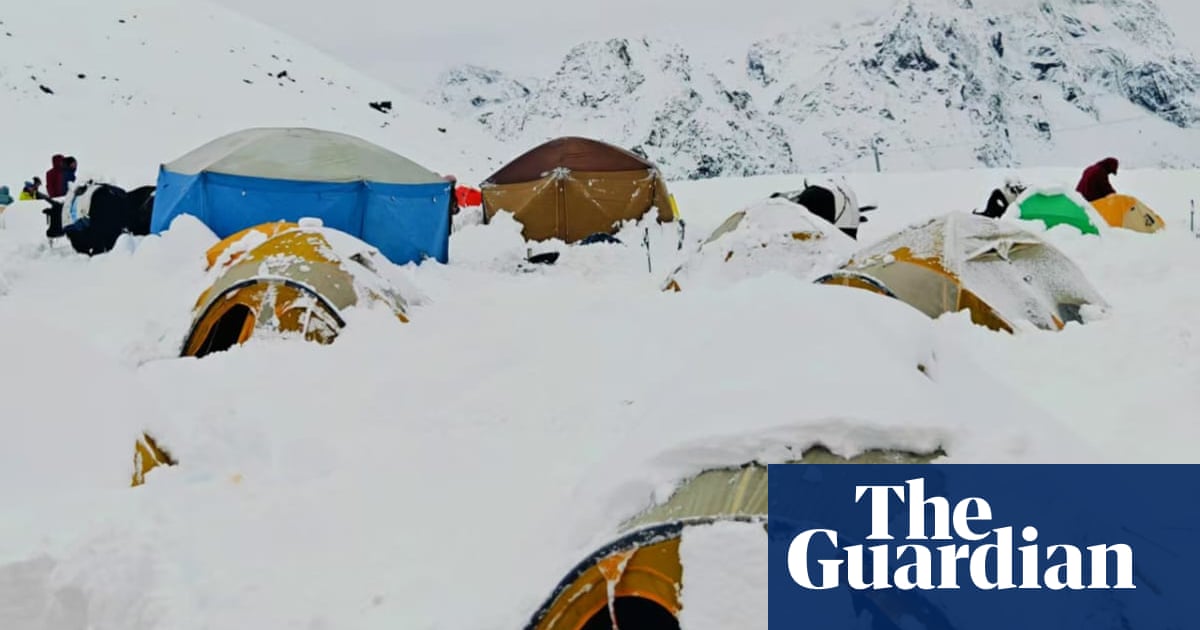
The weather wasn’t great. A bit drizzly and cold. But about 1,000 people steeled themselves on Mount Everest’s eastern flank to spend the national day long weekend trekking.
As he led the group along the path lined with stunning icy peaks, 32-year-old guide Shu Wei felt increasingly uneasy. He knew the weather on the mountains could be unpredictable and dangerous, but this snowfall was something else.
“It had already reached up to our knees around 8pm,” he says. “And it didn’t stop snowing the entire night.”
As they had set out, a deadly storm had formed above them, lashing Tibet and Nepal with heavy rain and snow, and trapping more than a 1,000 mostly Chinese hikers for days, a wild weather event that sparked extensive rescue efforts.
After dinner, the group had hunkered down in their tents, recalls 35-year-old trekker Wu Bin – but even as they tried to clear it, the snow kept on building up.
“It gradually piled up higher and higher, almost reaching the windows of my tent,” he says. “At that point, I began to feel that the situation was getting serious.”
The guides moved everyone into the dining tent together, lighting fires to keep warm and discuss the next steps. Shu explained to the group that they may be stranded there for a few days, but if the weather was OK, they’d descend in the morning.
“When I heard the guide mention that we might be trapped, I did feel quite worried,” says Wu. “I thought, if it’s just one or two days, I could probably manage, but if it lasted longer it would be hard to know what to do next, and that uncertainty was stressful.”
After a sleepless night, they made the call to leave in the morning for a descent that would take them all day. For the first stretch of the journey it was just them. But soon they were joined by other groups also making their escape. A line of trekkers trudged slowly through the knee-deep snow in the thin, high-altitude air.
“After we had walked about two kilometres, some yaks were brought in to open the path for us, which made progress much faster and helped us get out of the mountains earlier,” says Shu, an experienced guide who for years had worked on the western Sichuan Plateau.
“Along the way, we encountered many local villagers who came to help with the rescue efforts. They provided us with supplies, hot water, and food and drinks. When we finally reached the exit point, there were even instant noodles provided for us.”
Mountaineering media outlets have said there were forecasts of the weather, noting that climbing expeditions on nearby peaks had turned back days earlier, and local tourism authorities had also closed ticket sales and roads for the weekend. On Chinese social media, some questioned whether treks had been allowed to go ahead to take advantage of the holiday business.
Chinese news on the incident was relatively minimal over the course of the rescue. The strictly controlled state media often limit reporting on negative incidents, especially before they are resolved. There are also additional barriers to information because Tibet, where the rescues occurred, is under even tighter control by Chinese authorities.
By Tuesday almost 900 people, including 580 trekkers and 300 yak herders and local guides, had been evacuated from the park. Most made their way or were helped to a nearby village, Qudang. The storm also trapped 251 people in Qinghai, north of Tibet, where one Taiwanese trekker died of hypothermia and acute mountain sickness, according to state media.
In Xinjiang, 300 hikers were convinced to turn back by authorities, and one person hospitalised. Nepalese authorities told media there were no reports of people trapped on their country’s side of the mountain.
Additional reporting by Lillian Yang

